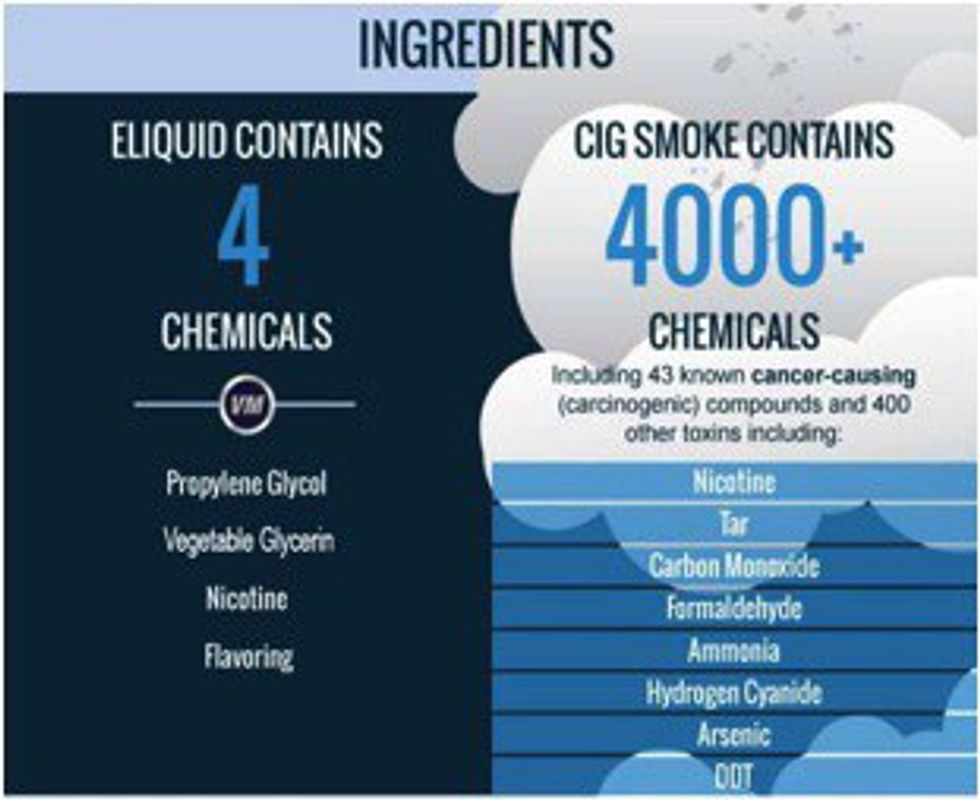Tobacco use has been a part of society dating back to 600-900 A.D. when the Mayans thrived in Mexico. Since then, tobacco has become a staple in America’s history from the moment settlers began selling the cash crop in 1612. Over the years, science has shown what negative effects smoking cigarettes and using tobacco products have caused due to the harmful chemicals and addictive component, nicotine.
People grew ill and died of mouth cancer, lung cancer, throat diseases, etc. Although the government has put on restrictions to minimalize the amount of tobacco users, there is no way our country will allow the demise of this addiction. Instead, people began looking at alternative options, and companies have created other means of getting in your daily fix without all the chemicals found in cigarettes. Vapes or e-cigs are still a growing industry, but are seen as the healthier way of smoking.
Considering this is a fairly new product, there isn’t too much information on the long-term effects of vaping. The U.S. Food and Drug Administration (FDA) is trying to work with the Electronic Cigarette Association (ECA) in an effort to regulate e-cigs and vapes. At this point in time, there are no regulations and in several studies the FDA has found inconsistencies with the ingredients, and nicotine levels on the vape liquid labels.
Some vape liquid bottles stated a certain percentage of nicotine on the labels, however when the bottles were tested they showed higher levels of nicotine than were stated. In other studies, the devices used at a higher voltage and temperature can burn the vape liquid, creating formaldehyde that users could inhale.
As many people know, formaldehyde and other carcinogens are found in cigarettes, which are also inhaled by smokers. There is nothing healthy about inhaling smoke into the lungs; it can only cause health issues down the road.
In order to fix this problem, it is necessary for the FDA to regulate the ingredients used in e-cigarettes to water, nicotine, flavoring, and propylene glycol or vegetable glycerin as the main base.
The FDA would also have to regulate the devices used so the voltage and temperature do not reach a level where formaldehyde can be created. Through a series of tests and experiments, the FDA could get an idea about the long-term effects smoking e-cigarettes has on humans. By looking at two groups of individuals, one that is only smoking regular cigarettes as opposed to the other group solely smoking e-cigarettes, we could gather information regarding possible health risks in the future.
Considering the fact people will continue to smoke, having the FDA conduct tests to better understand e-cigarettes would be beneficial in the long run. As many individuals already know, inhaling smoke into the body is not healthy. However, this way humans can practice the better of two evils by choosing vapes or e-cigarettes over traditional cigarettes. Vapes and e-cigarettes still aren’t the best option, but at least people will be aware of the chemicals they are putting into their bodies or lack thereof if the FDA chooses to regulate the ingredients.
The goal is to find an alternative to smoking traditional cigarettes. Of course, there are products like nicotine gum or patches to aid in the nicotine addiction without all the harmful chemicals found in cigarette smoke, but that still doesn’t help people with an oral fixation. Some individuals are also hooked on the idea of pulling and inhaling smoke from a cancer stick, so if e-cigs and vapes are regulated, they could eliminate this issue. Through proper research, testing, and regulation, we can use e-cigarettes and vapes as a safer way to quit smoking. If the FDA keeps tabs on the nicotine levels, ingredients, and devices, then people would be able to work their way out of this addiction in a safe manner.




 StableDiffusion
StableDiffusion StableDiffusion
StableDiffusion StableDiffusion
StableDiffusion Photo by
Photo by  Photo by
Photo by  Photo by
Photo by 
 Photo by
Photo by  Photo by
Photo by  Photo by
Photo by  Photo by
Photo by  Photo by
Photo by 












